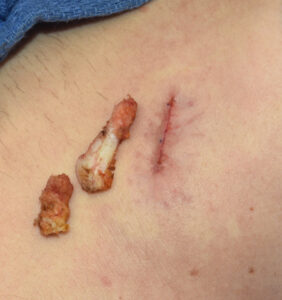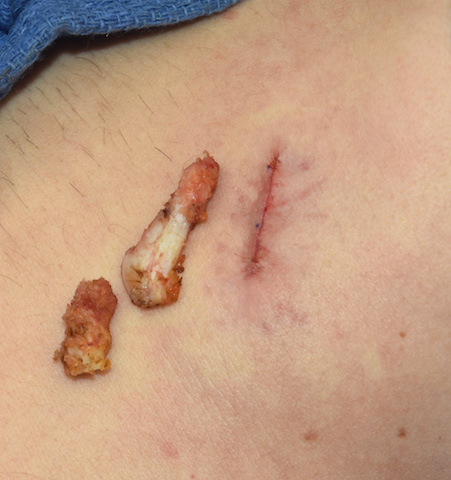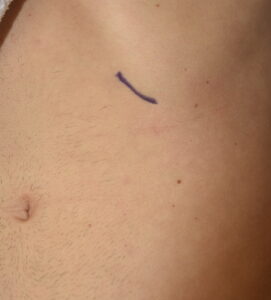The use of cartilage grafts is an essential need in many primary and revisional rhinoplasty surgeries. Most such grafts come from either direct anatomic proximity (septum) or from a regional source. (ear) But when these sites are inadequate due to lack of graft material or the volume of material exceeds their capacity, the more distant ribcage harvest is needed.
When harvesting rib cartilage there are numerous options given the large number of ribs and their bilateral nature. But not all of any rib is completely cartilaginous and some are extremely limited in that regard. The most plentiful amount of rib cartilage is at the subcostal margins. This is well known given that congenital ear reconstruction uses large amounts of cartilage harvested from portions of ribs 7, 8 and 9.

A thinner patient makes access to the outer subcostal margin the most direct. In thicker subcutaneous patients it is still not a major impediment…just a deeper hole. The lateral margin of the rectus abdomens muscle can be pushed aside for direct harvest of the rib ends. The enveloping fascia and attached soft tissue also provides soft tissue for additional graft material if needed.
I always place a Marcaine local anesthetic-soaked collagen sponge into the rib harvest site to decrease postoperative pain. A multi-layer closure makes for a very fine line scar at the side of the subcostal margin.
The smaller ends of ribs #9 and #10 are often overlooked in rib graft rhinoplasty patients. While they do not provide enough graft for major dorsal augmentations, they are more than adequate for most tip grafting needs.
Dr. Barry Eppley
Indianapolis, Indiana




